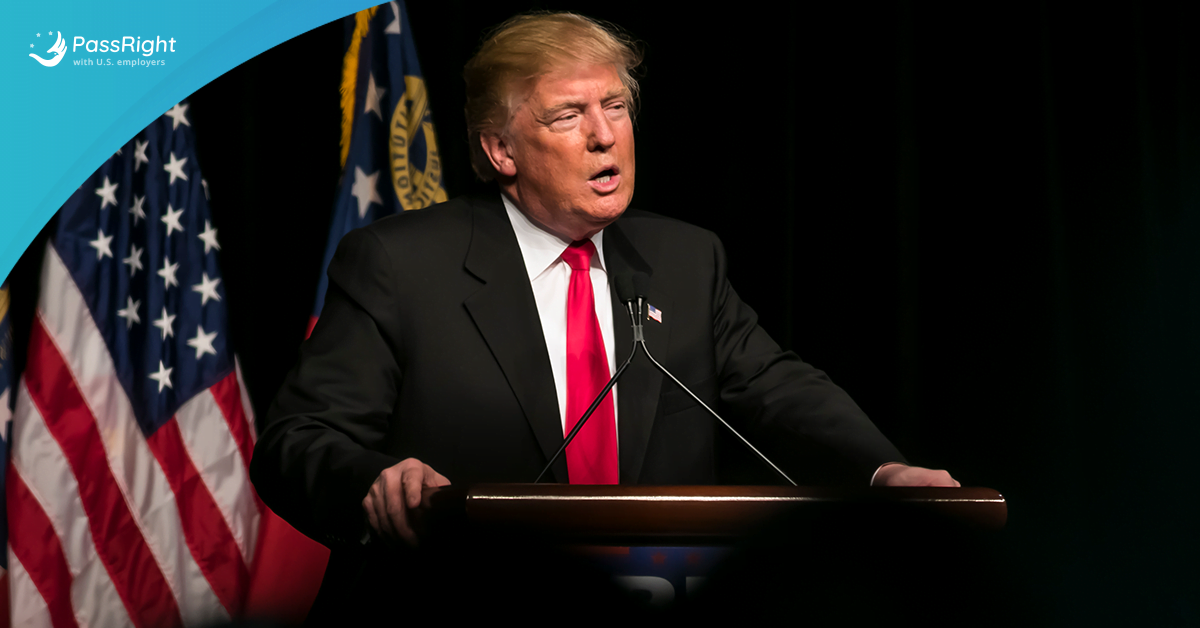What do you need to know about traveling in O-1 Status?
Immigration law does not place travel restrictions on an O-1 visa. You may travel as often and as far as you want and return to the U.S. after your trip abroad. However, if an O-1 visa holder plans to travel overseas, It is imperative to fulfill all immigration obligations needed to maintain your status while outside of the U.S. To re-enter the U.S. after your trip, you will need:
- A passport that is valid for at least six months longer than your O-1 visa expiration date
- A valid O-1 visa is stamped in your passport.
- I-797, Approval Notice for your O-1 visa
- Your updated employment letter shows that you are still currently employed as an O-1 holder. It must include your dates of employment, job description, and salary.
Traveling abroad while an O-1 petition is pending with USCIS
It is important to remember that after filing an O-1 petition, it is not advisable for O-1 candidates to travel abroad while the petition is pending. However, If international travel plans arise at the last minute and the O-1 employee cannot avoid traveling while the petition is pending with USCIS, please note the following scenarios:
1. Change of O-1 employer – If still employed by a prior employer, the O-1 employee may reenter using that employer’s approval notice and other documents. If previous employment has ended, they must wait for your current employer petition to be approved and then reenter the U.S.
2. Concurrent O-1 employment – If the petition is still pending on reentry date, the O-1 employee may reenter with another employer’s approval notice; If the petition has been approved, they must reenter with approval notices and other documents for all employers.
3. O-1 amendment – If the petition is still pending on the reentry date, the O-1 employee may reenter with prior unexpired approval notice from the employer and other documents. They must reenter the petition with an amendment approval notice and other documents to begin amended employment if the petition has been approved.
4. O-1 change of status – If the O-1 employee travels abroad while a petition is still pending, the change of status will, in all likelihood, be abandoned. If the O-1 employee reenters in prior immigration status, they must depart the U.S., wait for the petition to be approved, and then go through the O-1 entry process to begin O-1 employment. If the petition has been approved, they must use petition approval and other documents to begin O-1 employment
5. O-1 extension – If the petition is still pending on the reentry date, the O-1 employee may reenter with prior unexpired approval notice and other documents. If documents have expired or if the petition has been approved, they must reenter with extension approval notice (if received) and other documents to continue employment.
What is O-1 Visa status? O-1 Visa Types
The O-1A is a nonimmigrant visa dedicated to individuals who possess extraordinary ability in the sciences, arts, education, business, or athletics, and O-1B for people with an extraordinary ability in the arts or extraordinary achievement in the motion picture or television industry. Getting the O-1 Visa is one of the easiest ways for qualified individuals to gain access to the largest economy in the world, and PassRight is committed to making it as simple as possible. Qualifying for the O-1 Visa sounds like a tough nut to crack, however, this is not always the case. The basic idea behind this classification is that a foreign national with a proven track record should be allowed to enter the United States on this merit to apply these skills in the U.S. for the benefit of the country.

How to get an O-1 Visa?
Your achievements must be well known to the general public and properly valued to be granted either visa. The best example of those achievements is receiving a Nobel prize or Academy Award. However, suppose the Prizes mentioned above are not present in your resume. In that case, you could qualify for an O-1A visa by demonstrating your extraordinary ability and national or international acclaim by relying on three out of eight visa criteria, which are:
• Receipt of lesser nationally and internationally recognized prizes or awards for excellence in the field of endeavor;
• Membership in associations in the field which require outstanding achievements of their members, as judged by experts in the field;
• Published materials about the individual in professional or major trade publications, or appearance/published materials about the individual in other major media;
• Participation, either individually or as part of a panel, as a judge of the work of others in the field (including having served as a reviewer/referee for articles to be published, on discussion and advisory panels, etc.);
• Original scientific, scholarly, artistic, athletic, or business-related contributions of major significance in the field;
• Authorship of scholarly articles in the field, as published in professional or major trade publications or in other major media;
• Serving in a critical or essential capacity for organizations or establishments that have a distinguished reputation; and
• Commanding a high salary or other significantly high remuneration for services, as compared to others in the field.
For O-1B purposes, the extraordinary ability is defined as “distinction” in the arts. It can be shown through a one-time major achievement such as an Academy Award, Emmy, Director’s Guild Award, or evidence of at least three of the following:
• Performed and will perform services as a lead or starring participant in productions or events which have a distinguished reputation;
• Performed and will perform in a lead, starring, or critical role for organizations and establishments that have a distinguished reputation;
• Achieved national or international recognition for achievements;
• A record of major commercial or critically acclaimed successes;
• Received significant recognition for achievements from organizations, critics, government agencies, or other recognized experts in the field in which you are engaged;
• A high salary or other substantial remuneration for services in relation to others in the field, as shown by contracts or other reliable evidence
O-1 visa approval information
Your O-1 status is valid until the end validity date of your most recently issued I-94 card. If a change of status or extension of stay has been granted, then you are not required to travel outside the U.S. and apply for an O-1 visa in order to start your O-1 approval notice time. Your new I-94 is attached to the bottom of your I-797 Approval Notice. However, if your O-1 petition has been approved for consular notification, then you will not receive an I-94 card at the bottom of your O-1 I-797 approval notice. You will need to apply for a visa stamp at a U.S. Consulate or Embassy abroad before your O-1 status can be processed. You should always be aware that no matter where you go to apply for your visa stamp, there is always the small risk of administrative delays or security checks that could affect your visa processing time.
Conclusion:
O-1 visa gives you freedom to work and live in the US for the validity period of your visa. Number of entries and the validity period for the visa depends on the country of origin of the applicant. As such, nationals of Indonesia are typically issued a visa for 12 months with multiple entries, while Chinese citizens are issued a single-entry visa for 3 months. After you enter the US on this visa, you can stay to the date set forth in your I-94.
Anyone who has gone through the U.S immigration process will tell you that U.S. immigration is not a piece of cake. Apart from the extensive paperwork required, applying for the O-1 visa, every trip outside the U.S requires you to spend extra hours on paperwork and collecting documents. PassRight is committed to making it as simple as possible.
If you are interested in getting the O-1 visa contact us at info@passright.com.
FAQs
How long can I stay outside the US with an O-1 visa?
U.S. immigration law does not place travel restrictions on an O-1 visa. You may travel as often and as far as you want and return to the U.S. after your trip abroad. However, you need to remember that you need to make sure your visa stamp is valid to re-enter to the U.S, except for brief trips (less than 30 days) to Canada and Mexico.How long is an O-1 visa good for?
O-1 visa might be valid for any amount of time up to three years, with the possibility of obtaining extensions up to one year for as many times as your O-1 activities with the employer will last. Number of entries and the validity period for the visa depends on the country of origin of the applicant. As such, nationals of Indonesia are typically issued a visa for 12 months with multiple entries, while Chinese citizens are issued a single-entry visa for 3 months. After you enter the US on this visa, you can stay to the date set forth in your I-94.Is an O-1 visa better than H1-B?
Both O-1 and H-1B visa categories must be sponsored by a prospective US employer and supported with evidence of a job offer and your qualifications for the position. O-1 visa gives you flexibility much needed in the post-COVID world due to no specific time to apply, which is a most characteristic trait of the H1-b visa. However, the major difference is that the H-1B requires a Labor Condition Application (LCA) approval, and O-1 does not. Also, the O-1 visa can be extended for one year at a time without any maximum limit, as long as the project continues. By comparison, after the initial period of three years, H-1B can be renewed for up to six years only. Finally, due to similarities between the O-1 nonimmigrant visa and the EB-1 immigrant visa requirements, O-1 holders definitely have a better chance of being granted a “green card” in the future.Does an O-1 visa lead to a green card?
Not automatically. Although the O1 visa allows you to seek to become a permanent resident of the United States, a green card program is not in any way an extension of an O-1 visa. However, because of similarities between the O-1 nonimmigrant visa and the EB-1 immigrant visa requirements, O-1 holders definitely have a better chance of being granted a green card in the future.








